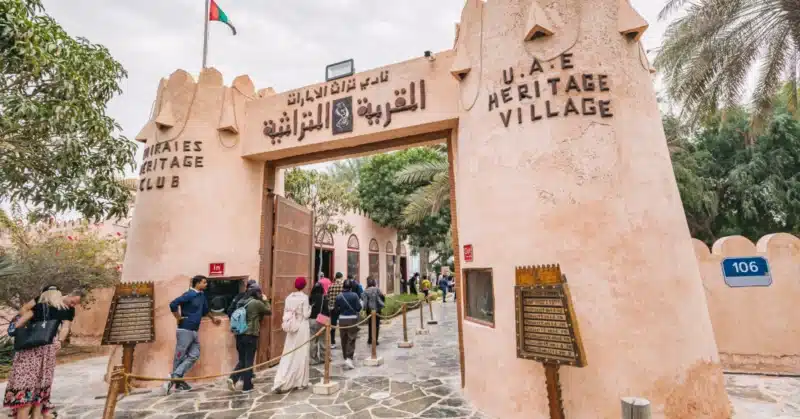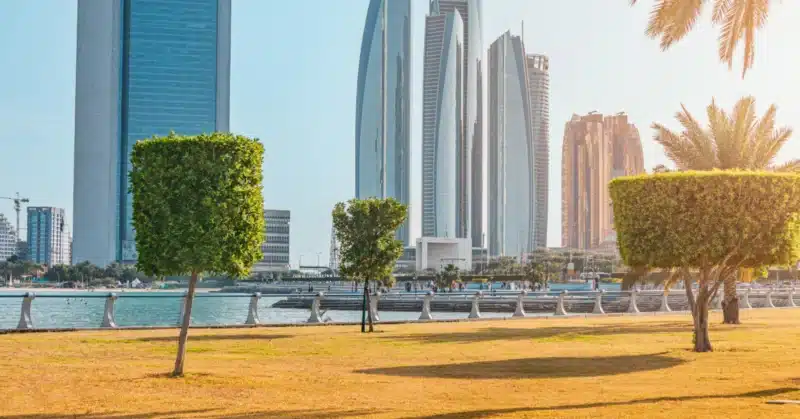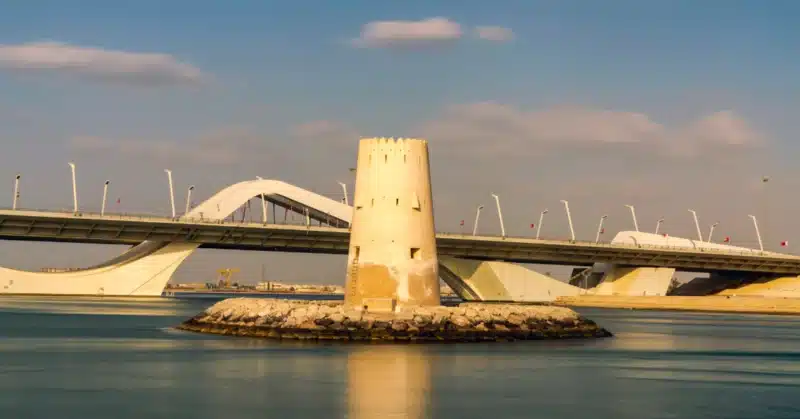Abu Dhabi began as a small cluster of coastal settlements and grew into a city that balances history with modern life. The shift came quickly after oil was found in the 1960s, and planners then had to think ahead as population and buildings multiplied. Understanding how the Abu Dhabi old vs new divide plays out helps residents, visitors, and investors see what each area offers.
This comprehensive guide will help you clearly compare the old vs the new Abu Dhabi!
- History: the foundations of Abu Dhabi
- Oil discovery and rapid transformation
- City planning and the urban landscape
- Comparative overview
- Lifestyle and community
- Attractions: past vs present
- Society, culture and transport
- Key takeaways
- Frequently asked questions
History: the foundations of Abu Dhabi

Before the oil era, life in the region was deeply tied to the sea. Communities earned their living through fishing, pearl diving, and trade with nearby ports. Their homes reflected this simplicity, built from coral, palm fronds, and timber, with wind towers (barjeel) ingeniously cooling interiors without electricity. Social life revolved around family, the mosque, and the souk, creating a close-knit rhythm of daily life that shaped the city’s early character and identity.
Oil discovery and rapid transformation
When oil was discovered in the 1960s, the pace of change increased as money flowed into roads, ports and public buildings. Planners expected growth and laid out wide streets and public spaces. Moreover, the new infrastructure met the needs of a growing and increasingly diverse population of 600,000, while many traditional elements were retained for heritage and cultural purposes.
City planning and the urban landscape
Old Abu Dhabi: the historic core
- Key districts include Mina Zayed, Heritage Village, and the eastern Corniche.
- The souks, fish, fruit, and carpet markets remain lively and local.
- Old harbours still host dhows, keeping alive a maritime tradition.
- Streets feel more walkable; shops and family businesses give the area a neighbourly tone.
New Abu Dhabi: the modern metropolis
- The West Corniche, Etihad Towers and Marina Mall show the city’s modern ambitions.
- Tall buildings, luxury hotels, and large malls dominate the skyline.
- Roads follow a clear grid, and planners added wide boulevards and green spaces.
- Development pushed the city outward onto new islands and into suburban districts.

Comparative overview
Below are practical ways to compare the old and the new parts of the city:
- Cultural vibe
- Old: traditional, community-focused, conservative dress and customs.
- New: cosmopolitan, diverse and geared toward international tastes.
- Old: traditional, community-focused, conservative dress and customs.
- Architecture
- Old: low-rise buildings, wind towers, and market alleys.
- New: high-rise towers and contemporary designs.
- Old: low-rise buildings, wind towers, and market alleys.
- Cost of living
- Old: more affordable housing and markets that favour everyday budgets.
- New: premium housing and services with higher price points.
- Old: more affordable housing and markets that favour everyday budgets.
- Population
- Old: higher share of long-term residents and Emirati families.
- New: a diverse expatriate mix and many international professionals.
- Old: higher share of long-term residents and Emirati families.
- Activities
- Old: souks, dhow rides, and traditional dining.
- New: theme parks, luxury beach resorts, and a wide range of restaurants.
- Old: souks, dhow rides, and traditional dining.
Lifestyle and community
Daily life in the historic areas moves at a gentler pace. Neighbours know one another, and shops and family-run businesses form daily routines. In contrast, life in the newer districts can feel brisk, with people balancing work, school runs, and leisure across modern facilities. New parts of the city draw young professionals and international families with their schools, clubs and services.
Explore: Best places to watch the sunset in Abu Dhabi.

Attractions: past vs present
What to experience in old Abu Dhabi:
- Walk the eastern Corniche and watch dhows in the harbour.
- Browse Mina Zayed souks for fish, fresh produce and textiles.
- Visit Heritage Village for a clear view of Emirati history.
- Try traditional Emirati food at small, local eateries.
Highlights of new Abu Dhabi:
- Enjoy luxury beaches and modern Corniche developments.
- Visit world-class attractions like Louvre Abu Dhabi and Yas Island.
- Experience theme parks, high-end shopping and contemporary art spaces.
Society, culture and transport
Abu Dhabi’s population shifted from a small fishing community to a global city. Old areas remain culturally rooted, while new areas reflect global trends and lifestyles. Authorities now balance rapid growth with heritage preservation through museums, restoration work and festivals.
Additionally, transport changed too: the historic core is easier to explore on foot, while modern districts rely more on roads. Public transport and well-planned highways now help link the two worlds.
Key takeaways
Abu Dhabi old transformed from a traditional fishing and pearl-diving community into a modern metropolis because oil wealth and careful planning guided its growth; the historic districts preserve close-knit community life, markets and low-rise architecture, while the newer parts showcase skyscrapers, luxury amenities and a cosmopolitan population.
Together, old and new Abu Dhabi offer a blend of heritage and innovation that appeals to long-term residents, international families and visitors. Investment in infrastructure, cultural projects and sustainable planning helps both parts of the city remain vibrant and relevant for the future.
FAQs
Old Abu Dhabi centres on traditional neighbourhoods, souks and historic architecture; New Abu Dhabi features contemporary towers, luxury amenities, and a more international population.
Generally, yes, it is, as older neighbourhoods tend to offer more affordable housing and everyday markets, while newer developments command higher prices.
Heritage Village, Mina Zayed’s markets, dhow-lined harbours and the eastern Corniche are all tied to the city’s past.
Old areas feel community-led and more conservative; new areas feel fast-paced and multicultural.
Planners used grid systems, wide boulevards and targeted investments to support growth, allowing both preservation of heritage sites and the construction of modern districts.